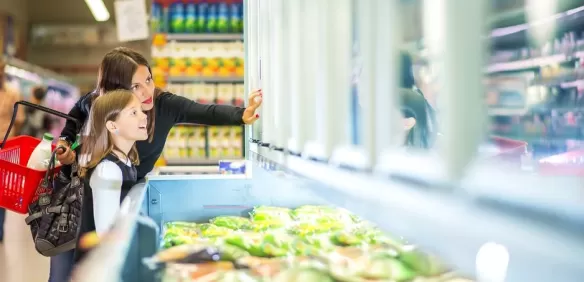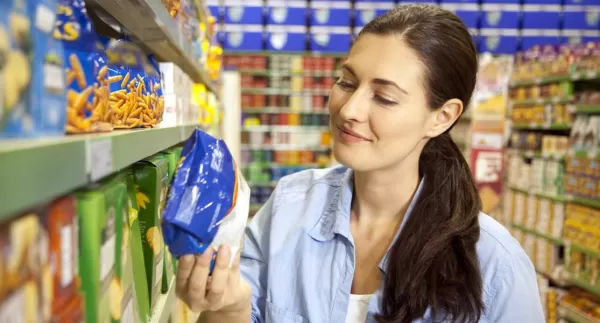
What modified atmosphere for the conservation of fresh meats?
Beef, poultry, pork, lamb… which gas mixture should I choose to package my food products in a modified atmosphere?
Modified atmosphere packaging uses natural air components. It increases the shelf life of pre-packaged fresh foods before they are put on sale. But which gas mixture should you choose based on the products?
There are several categories of products, depending in particular on their Water Activity (Aw) and degradation issues. If in general, oxygen, which is responsible for many spoilage of foods, should be avoided, certain products require a minimum oxygen content in the atmosphere used, in order to preserve color or maintain respiration. This is the case for meat products.
Characteristics of meat products
Preserving meat in a modified atmosphere means limiting its deterioration to increase its shelf life.
Meat products are products with a high water content (> 65%). The development of bacteria can be responsible for bad odors and greening of the products. Oxidation can cause brown pigments and fats to become rancid. Exudates may also form.
For the preservation of fresh meats, there is only one solution: cold combined with packaging.
Rigorous (0 - +2°C) and continuous cold, maintained from the transformer to the consumer, limits the growth rate of bacteria and biochemical alterations. Packaging, in addition to mechanical protection, handling and work management, improves the shelf life of meats. But which gas to choose?
It's all about colour
The use of a superoxygenated gas mixture makes it possible to maintain or strengthen the red or pink color of certain meats or poultry.
Myoglobin in the blood reacts with oxygen and takes on different colours. When oxygenated, meat is bright red; when oxidized the meat is brown and when reduced the meat is purple. To obtain the desired red colour, we will use a mixture with a very high level of oxygen (> 60%).
The simultaneous use of carbon dioxide (CO2) in the mixture contributes to slowing down the development of microorganisms.
The need for an oxygen-enriched mixture varies depending on the types of meat, which all have a different colour. It is essential for very red meats like beef, offal, game and pink meats like turkey, and less necessary for white meats like chicken, depending on the cuts presented.
Meat packaging, several stages of application
In the meat processing process, depending on the types of meat and the size of the pieces, there are several uses of packaging: large, ½ large, muscles and details, whether for out-of-home catering or the end consumer.
When the packaging is intended for sale, it is important to emphasize, depending on the type of meat, the red color that appeals to the consumer. The packaging will be done with a mixture rich in oxygen, supplemented with carbon dioxide with a minimum of 20% to ensure an effect on the bacteria.
For larger pieces, intended to be processed in restaurants or for subsequent retail sale, we can do without oxygen because the color is not a problem. We will use a Nitrogen/CO2 mixture which must contain a high CO2 content (30 - 50%) to have an even longer shelf life.
For these products, vacuum packaging could be adopted, but this remains inappropriate for bone-in products, which are likely to puncture the packaging.
Master the technique
You have to be very demanding if you want to obtain good results when packaging in a protective atmosphere. The products are often presented in thermoformed or polystyrene trays. They must be of excellent hygienic quality before packaging. It is then necessary to work with highly gas-barrier films and well-adjusted machines. The quality of the welds is also fundamental.
For meat packaging, Air Liquide offers the food grade gas mixtures (70% O2 - 30% CO2) for red meats, and (50% CO2 - 50% N2) for meats for which the colour is not not a problem.
By choosing food grade gases from Air Liquide, you benefit from the experience and know-how of a world leader in industrial gases, an expert in protective atmospheres.
Do you have questions about modified atmosphere for preserving fresh meats? ? Please fill out our contact form.
Our experts will respond to you within 24 hours
Frequently asked questions
How to increase the shelf life of products?
What does “packaged in a protective atmosphere” mean on certain food packaging labels?
What are the different packaging machines for M.A.P?
What installation do I need to use gas?
What modified atmosphere for the conservation of fresh meats?
What modified atmosphere for bakery products?
What modified atmosphere for the conservation of seafood products?
What modified atmosphere for the conservation of cheese and dairy products?
What modified atmosphere for dry products?
What modified atmosphere for the conservation of prepared fruits and vegetables?
